
Here in ChufaMix, we’ve been long looking around the web to find some kind of scientific studies on the differences between both homemade and store-bought plant milks, mainly related to their nutritional properties. Hard to believe that, as different as both drinks are, no research could be found.
It’s sad to think that’s it’s easier to find a tutorial on how to make a homemade bomb on the internet than nutritional studies of such nature. How’s that possible? It looks like someone’s trying to only benefit an already too powerful food industry.
 Given the lack of information and our constant desire to learn more about the goodness that plants have to offer, we did our own research and published an article called “Plant milk vs. store-bought: a comparative”.
Given the lack of information and our constant desire to learn more about the goodness that plants have to offer, we did our own research and published an article called “Plant milk vs. store-bought: a comparative”.
If you need more info, feel free to check out our article on the nutrients from the seed passing into the milk full of interesting data from the exclusive research of Dr. Patxi Bixquert, from Hospital Arnau Villanova, and Universitat de Valencia teachers Rosaura Farré y Amparo Alegría, published almost 15 years ago.
Interested in knowing more about the nutritional properties of all plant drinks, we decided to ask some professional scientists for help. Two years after, we finally have some answers. Is homemade horchata (or tigernut milk) better than its industrial counterpart? You’ll soon know!
Thanks to a team from Spanish Centro Superior de Investigaciones Científicas (CSIC), Praga’s Chemistry and Technology university (which is one of the best food technology universities in Europe), Food & Health Lab from Universidad de Valencia, y Valencia Pharmacy School, as well as horchateros Andoni Monforte (Món Orxata-ChufaMix) y Cristobal Subies (Horchatería Subies), it was possible to carry out and extensive and informative nutritional study on tigernuts and horchata, one of the most important in the last few years .
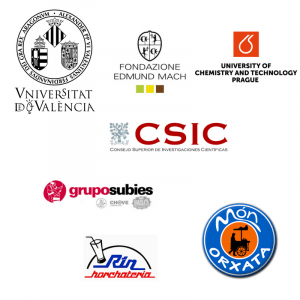 Results from the research carried out are becoming more and more relevant as time goes by, since horchata is becoming so much more popular in countries like Germany, Japan and USA, being qualified as the next big superfood trend (just like quinoa or chia were in the past). Can you believe that a glass of natural horchata is 9$ in the US, whereas 250 grams of tigernuts cost 8 euros in German supermarkets?
Results from the research carried out are becoming more and more relevant as time goes by, since horchata is becoming so much more popular in countries like Germany, Japan and USA, being qualified as the next big superfood trend (just like quinoa or chia were in the past). Can you believe that a glass of natural horchata is 9$ in the US, whereas 250 grams of tigernuts cost 8 euros in German supermarkets?
43 samples of both sugar free and regular natural horchata were analysed. As protocol requires, all come from different batches made by Món Orxata, Subies, Rin, Els Sariers, Toni, y Bonaire, among others. 10 samples of homemade horchata made with our beloved ChufaMix Vegan Milker were also tested, and so were 44 samples of store-bought horchata.
Research results were presented on May the 18th in Valencia, Spain, and here are some things to note:
1-A HIGHLIGHTED AMOUNT OF PHOSPHOLIPIDS
For the first time ever, a notoriously substantial number of phospholipids has been detected in natural horchata, being phosphatidic acid the most important one
International research labs had been working on similar studies as well, which has made possible to prove that, both tigernuts and natural horchata are two of the plant-based foods with the highest count of phospholipids, being this amount bigger than soya’s.
This is quite a relevant discovery, since phospholipids are an essential component of cellular membranes.
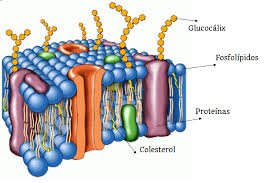 Horchata’s lipid profile is found to be composed by 70-80% mono unsaturated fatty acids or MUFA’s (which are considered a healthy kind of fat), among which we will highlight oleic acid. Oleic acid and the phospholipids found in this drink work together forming a “Nutritional Dream Team”, since phospholipids help integrate the former into the cellular membranes, consequently making them stronger.
Horchata’s lipid profile is found to be composed by 70-80% mono unsaturated fatty acids or MUFA’s (which are considered a healthy kind of fat), among which we will highlight oleic acid. Oleic acid and the phospholipids found in this drink work together forming a “Nutritional Dream Team”, since phospholipids help integrate the former into the cellular membranes, consequently making them stronger.
As explained by a well-known surgeon:
“Most illnesses ailing today’s society derive from cellular disorders. By making your cellular membranes more resistant, you can help prevent plenty of pathologies, as endorsed by a wide range of international studies”.
It should be noted that, while store-bought horchata is way healthier if compared to its soft-drinks counterparts (which is due to its lipid profile and the fact that its derived from plants), no traces of phosphatidic acid were found when analysing these industrial horchata samples.
Furthermore, the amount of phospholipids present in natural horchata (in the sense that it hasn’t been subjected to thermal treatment to expand its shelf-life) is vastly superior from a nutritional standpoint, which means it’s advisable to reach for the most unprocessed versions versus the industrial ones.
2- A HIGH AMOUNT OF ARGININE
What’s arginine? Arginine is an important amino acid which aids the formation of nitric oxide inside the body. This compound is found to improve blood health by helping vasodilation take place.
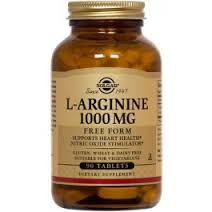 It’s important to note how arginine helps secrete hormones involved in insulin production as well. Thereupon, sugar-free horchata is a great addition to a well-balanced diet, since it can help type II diabetes sufferers reducing their insulin resistance.
It’s important to note how arginine helps secrete hormones involved in insulin production as well. Thereupon, sugar-free horchata is a great addition to a well-balanced diet, since it can help type II diabetes sufferers reducing their insulin resistance.
In this case, research carried out reveals that natural horchata has exactly 5 times more arginine than its processed counterpart.
3- A HIGH AMOUNT OF BIOTIN
Plenty of exciting discoveries have been made after a year and a half of continuous research on the nutritional attributes of horchata carried out by Universitat de València Pharmacy School, Praga University of Chemistry and Technology and CSIC, but none of them are quite as interesting and surprising as the following.
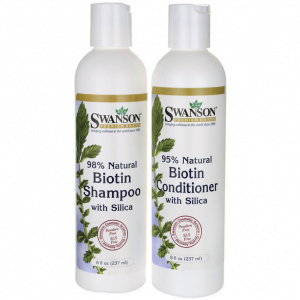 For the first time ever, a significative amount of B7 vitamin (also known as biotin) has been found in fresh, natural tigernut horchata.
For the first time ever, a significative amount of B7 vitamin (also known as biotin) has been found in fresh, natural tigernut horchata.
Biotin is known to be one of the most popular vitamins used in “nutricosmetics” a new discipline which studies the effect of different vitamins and nutrients when applied to cosmetics.
This vitamine is used as an anti-aging agent in creams, shampoos and serums, as well as being part of most multi-vitamin complexes on the market. Notorious brands like L ́ORÉAL, LANCÔME, SEPHORA, SCHWARZKOPF, o AVON among others are known to add biotin in order to make their products more effective.
Here you’ll find a list with biotin’s most essential functions:
Skin care and muscle tissue maintenance:
B7 vitamin is an essential one when it comes to keeping all skin tissues healthy, as well as helping revent skin illnesses such as dermatitis and some kinds of eczema. Biotin is also known to aid nails and hair grow strong, being that it’s a key factor in keratin production.
Weight loss:
Biotin helps break down carbohydrates and lipids inside the human body. Because of this, this vitamin can help maintain a healthy weight, as long as a balanced lifestyle is lead.
People who are struggling to lose weight or present any kind of worrying skin condition are usually recommended to increase the consumption of biotin-rich foods, such as boiled eggs, many types of fish and meat and plant foods like peas or walnuts.
Tigernuts and horchata would also be the perfect thing to add to one’s diet when the risk of suffering a biotin deficiency is present. Both products are also rich in vitamin E (as discovered 14 years ago now by Universidad de Valencia researchers Rosaura Farré and Amparo Alegría and Doctor Bixquert, from Hospital Arnau Villanova) which makes them a wholesome and very nutritious food, especially when it comes to the sugar-free version.
Thousands of chemical compounds from more than 80 samples of horchata have been analysed with “Untargeted Metabolomics Fingerprinting”, having been statistically proven that, biotin levels in natural horchata are 5 times more prevalent than those found in store-bought horchata. Same thing goes for the levels of arginine. This research also determined that all phospholipids, various amino acids like arginine and vitamins like biotin are more commonly found in natural horchata.
We don’t have so much data so far, but it’s easy to see how it’s much better from a nutritional standpoint to reach for the more natural plant milk versions, as nutrients and minerals are scarce in packed drinks.
It’s clear to us how both the plant milk industry and plastic packaging lobby are trying to hide these facts from the people, using non-ethical tactics as well as misleading advertising to get a very confused consumer to buy their products.
Worry not, because you can still count on us to bring you the latest unbiased research. Especially when it’s so important when it comes to help people’s health and their right to choose what goes into their bodies.

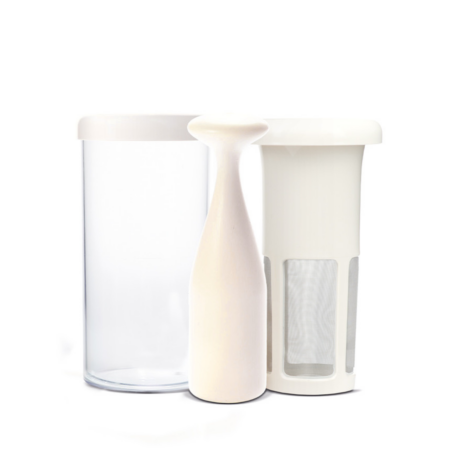
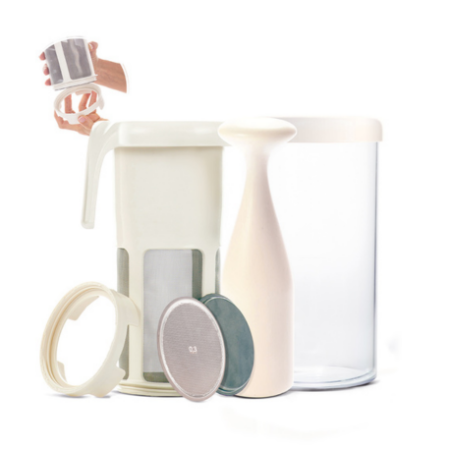
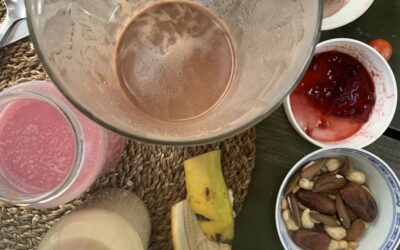


0 Comments